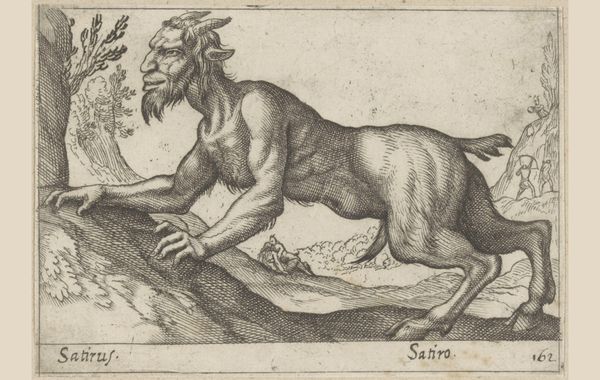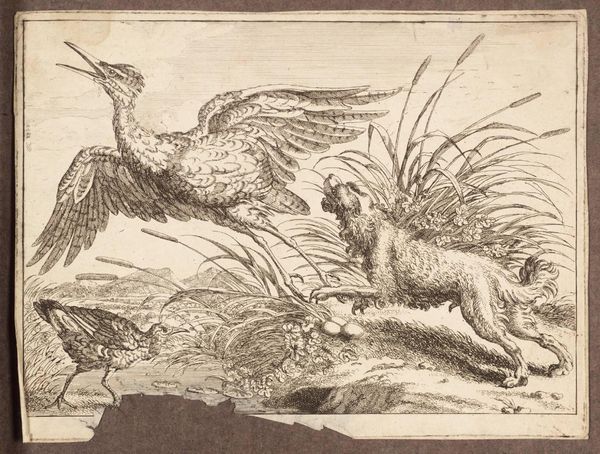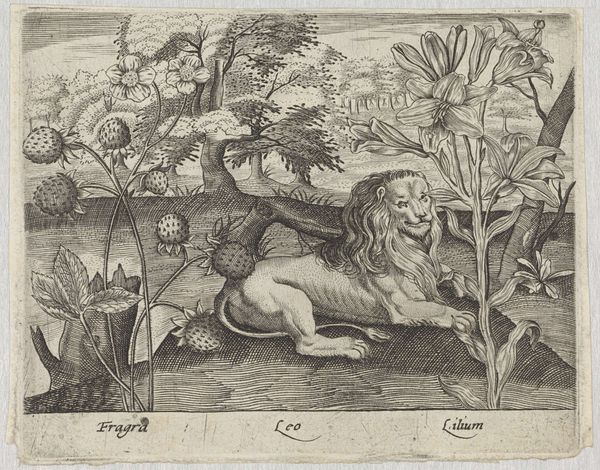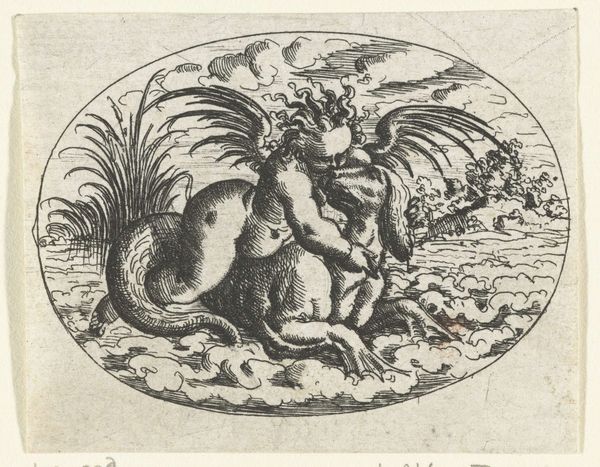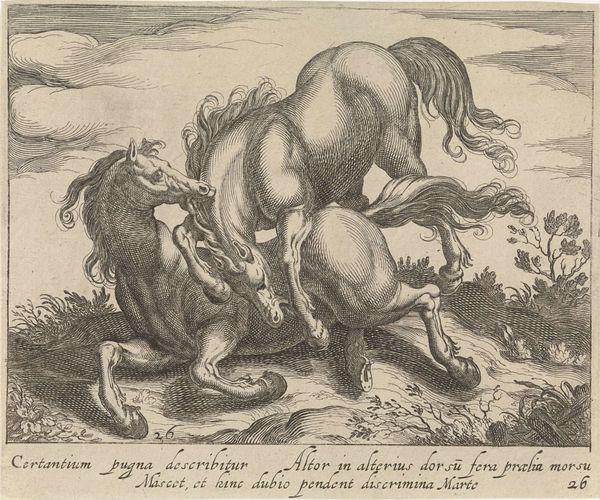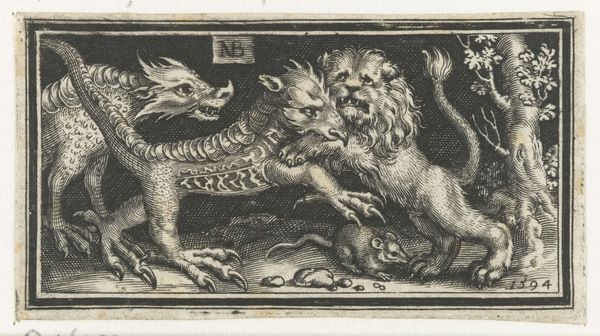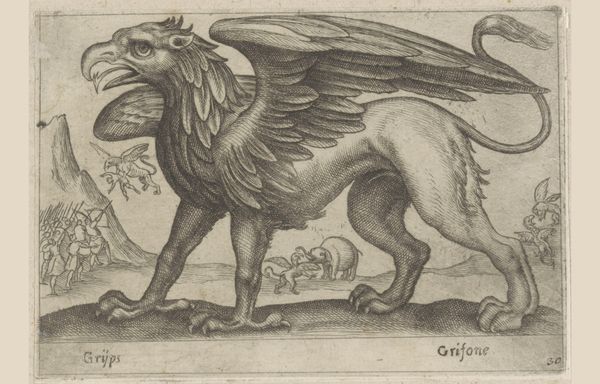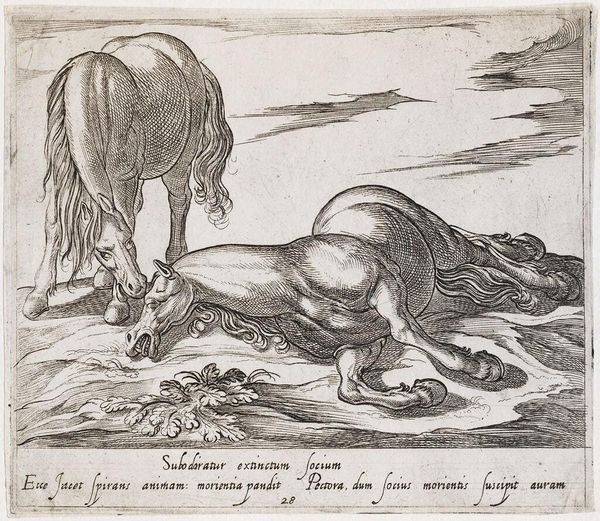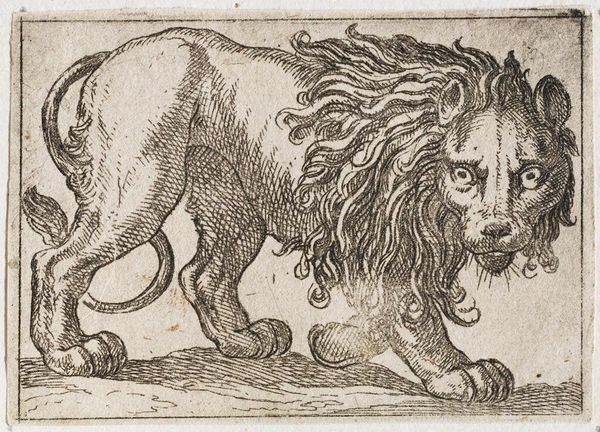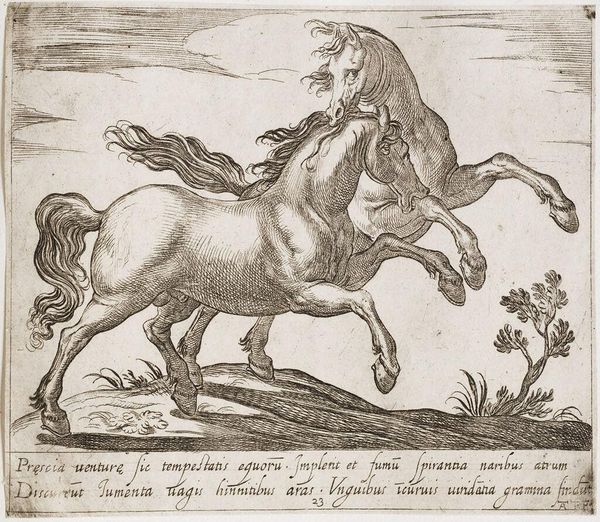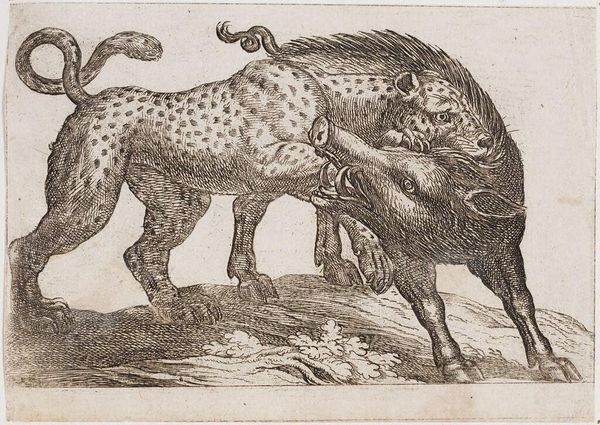
etching, engraving
#
allegory
#
etching
#
landscape
#
fantasy-art
#
mannerism
#
figuration
#
engraving
Dimensions: height 95 mm, width 137 mm
Copyright: Rijks Museum: Open Domain
Curator: The disturbing imagery in Antonio Tempesta’s etching "Monsterlijk wezen," dating from before 1650, certainly commands attention. It's held here at the Rijksmuseum. What strikes you most about it? Editor: It’s…unsettling. The composition feels awkward, yet there's something primal and evocative about it. The monster seems to writhe with discomfort, an abject sense of wrongness. Curator: Indeed. Tempesta was operating within the Mannerist tradition, and there is an inclination to move away from the harmony and balance associated with the Renaissance. This work showcases a very specific allegorical purpose within that aesthetic, presenting an invented landscape to convey a deeper message. What symbolic resonances do you perceive? Editor: The monstrous figure is a compelling distortion of nature, a combination of animal and human attributes representing inner turmoil and perhaps even repressed desire. Consider how the miniscule hunter in the background challenges the viewer to consider societal order and dominance, as a microcosm, perhaps. The beast may simply represent the world outside human control, ready to "pounce" if civilization's guard drops. Curator: Excellent observation! The monster has components echoing older figures like Silenus and fauns, emblems of the wild and instinctual. Yet here it feels imbued with an uneasy mix of pain and threat, amplified through Tempesta’s stark linear style. We might explore how, historically, such grotesque imagery functioned as a safety valve, allowing for transgressive expression in times of socio-political constraint. Editor: And notice how even in this supposedly 'wild' state, there’s a bizarre attempt at definition – see the carefully delineated muscles, and detailed hair, all fighting for control over the form. I wonder if it’s more than mere self-expression. Did these images influence contemporary understanding of zoology, or simply reinforce societal anxieties about humanity’s place in the hierarchy? Curator: That is astute. Dissemination through print culture meant images like these reached a broad audience. This certainly affected, to some degree, how society imagined itself against, and in relationship with, the bestial world, reinforcing, perhaps, the idea of inherent human superiority. Editor: The legacy of how we see such "beasts" is ongoing even now. Today it may be found in how we portray misunderstood figures, and continue to make images that shape moral and social attitudes. Looking at it now, I think of this print not just as an image from the past but also a key, somehow, into understanding our own prejudices. Curator: Precisely, its lasting power hinges on that continued relevance, mirroring back our evolving, and, sometimes, unchanging concerns about otherness and the edges of our moral compass.
Comments
No comments
Be the first to comment and join the conversation on the ultimate creative platform.
